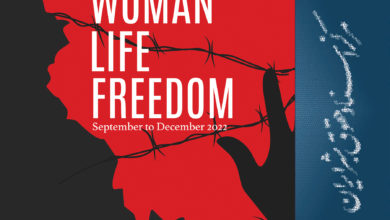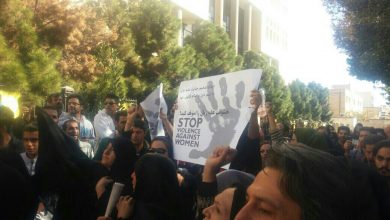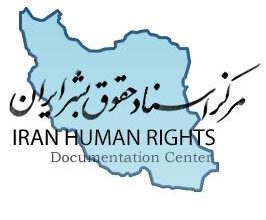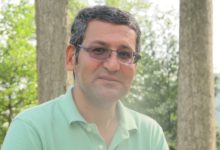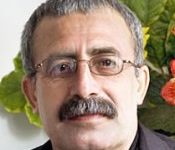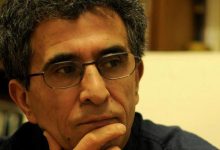Witness Statement: Mohsen Sazegara
Mohsen Sazegara is a political analyst, writer and a founder of Iran’s Islamic Revolutionary Guard Corps who later supported Iranian student demands for reform. In this witness statement, he describes his experiences in Evin Prison, including interrogations, lengthy periods of solitary confinement and a hunger-strike
Full Name: Mohsen Sazegara
Date of Birth: January 5, 1955
Place of Birth: Tehran, Iran
Occupation: Political activist and one of the founders of the Islamic Revolutionary Guard Corps
Interviewing Organization: Iran Human Rights Documentation Center (IHRDC)
Date of Interview: February 14, 2008; September 26, 2008
Interviewer: Habib Rahiab
Witnesses: None
This statement was prepared pursuant to in-person interviews with Mr. Mohsen Sazegara, The statement consists of 37 paragraphs and 8 pages. The interviews were conducted on February 14, 2008 and September 26, 2008. The statement was approved by Mr. Sazegara on November 10, 2008.
Witness Statement
How Did the Parallel Intelligence Agency Take Form?
1. The Chain Murders occurred during the presidency of Mr. Khatami presidency and Mr. Dorri-Najafabadi was removed from his post at the Ministry of Intelligence. Khatami had the opportunity to replace him with Younesi, who was a reformist. The Ministry of Intelligence approved and accepted Younesi.
2. After the Chain Murders and the arrival of Younesi, Khamenei’s influence in the Ministry of Intelligence diminished. He wanted an intelligence organization that unconditionally operated under his direct supervision, especially when it came to confronting the reformists and journalists.
3. For example, during a meeting between Mr. Khameni and Younesi, Khamenei spoke regarding the threat from members of the Nationalist-Religious party and indicated that these individuals planned to overthrow the regime. Mr. Younesi explained that the Ministry of Intelligence had gathered significant information on the Nationalist-Religious party and was aware of all of their activities. He indicated the information was collected pursuant to the wiretapping of meetings (and private telephones) of important members of the party. Younesi disagreed with Mr. Khamenei’s view, reasoning that experts in the Ministry of Intelligence believe that the Nationalist-Religious party did not intend to overthrow the regime.
4. This event (along with others) caused Mr. Khamenei to establish an independent intelligence organization under his supervision. This organization apparently operates under the guise of the Intelligence Protection Center of the Judiciary. In the beginning, this organization lacked its own facilities. Sometimes it would use the underground facilities of the Amaken office in order to summon regime opponents, reformists, artists, actors and journalists. Divisions within the intelligence offices of the Revolutionary Guards, the Judiciary, units from the public prosecutor’s office (most of whom were colleagues of Mr. Asadollah Lajevardi, the former prosecutor of the Islamic Republic) and right-wing factions expelled from the Ministry of Intelligence all came together and established the parallel intelligence apparatus (PIA). The PIA operated directly under the authority of the Supreme Leader.
5. The PIA had a chief executive by the name of Elias Mahmoudi, who headed the Intelligence Protection Center of the Judiciary. But Mahmoudi was nothing more than a figurehead. The PIA operated pursuant to a secret council that was directly accountable to the Supreme Leader. Asqar Hijazi, who was responsible for managing the Intelligence Protection Office of the Supreme Leader, and Morteza Reza’i, who later became the successor-in-waiting to the head of the Revolutionary Guards and was responsible for running the Intelligence Protection Office of the Revolutionary Guards at the time, were both members of the leadership council of the PIA. The council was headed by Morteza Reza’i. Reza’i used to be the commander of the Revolutionary Guards during the victory of Khorramshar. He resigned from this position because of his opposition to the continuing war with Iraq. He pursued dairy farming until the end of the war, at which point he reassumed his post as head of the Intelligence Protection Office of the Revolutionary Guards. He has since stepped down as deputy commander of the Revolutionary Guards. In addition to this, Mr. Zarqami (who currently heads the Islamic of Iran Broadcasting (IRIB)), Larijani (the current head of the Majlis), Mr. Zulqadr (who served as deputy commander for the Revolutionary Guards at the time) and Shariatmadari (who was the chief editor of Kayhan) also participated in the leadership council of the PIA.
6. The PIA had an advertising commission and employed its own interrogators. It also had the capacity to eavesdrop on private telephone conversations pursuant to orders from the Supreme Leader. Judge Mortazavi, the head of Branch 1024 of the Prosecutor’s Office and later the Prosecutor General of Teharn, was the public face of the PIA. Judge Zafarqandi who headed Branch 8 of the Revolutionary Courts and Judge Hassan Zareh-Dehnavi (also known as Judge Haddad) who was responsible for Branch 26 of the Revolutionary Courts where many journalists and bloggers were put on trial, were other judges who worked for the PIA.
7. Individuals who cooperated with the PIA were eventually all promoted for their activities.
8. The PIA was primarily responsible for leading the fight against the reform movement. It was largely successful in its efforts. It can be said that the PIA was essentially a tool of repression successfully used by Mr. Khamenei to defeat the reform movement.
The Relationship Between the PIA and Secret Prisons
9. I’m going to talk about two particular secret prisons and several [hidden] wards inside Evin Prison that are essentially prisons with a prison. These prisons are closely tied to the formation of the PIA, and I will elaborate on each case.
10. The first was a prison in which Karbaschi, the [former] mayor of Tehran, and his deputies were held. This prison was allegedly supervised by Mr. Sardar-Naqdi, the former Commander of the Law Enforcement Forces.
11. I later found out that many mayors and their deputies were sent to this secret prison. I had a friend from high school who worked for Tehran’s municipal government. He was also targeted by Sardar-Naqdi. I ran into him after he was released from prison. He told me that they had taken him to an underground location run by the intelligence service of the Law Enforcement Forces. The facility was close to Youth Square, which is behind Shariati Avenue. (At that time the Youth Palace was located here, but it is now occupied by the Martyr Mofatteh Cultural Center.) He also told me that [his captors] wanted him to review the municipality’s voluminous financial records within a short period in order to uncover embezzlement [allegedly] committed by the mayor and his staff.
12. I also met with one of the deputies that worked for the municipality. He had also been interrogated and tortured in this prison. He explained that his interrogators had hung him upside down and beaten him.
13. The second [prison] is connected to the period during which the PIA was established.
14.The first notable operation conducted by the PIA involved the arrests of several members of the Religious-Nationalist group who were abducted at the residence of Mr. Basteh-Negar, and others who were taken from their homes. Because the PIA did not have its own prisons and facilities it used the Revolutionary Guard’s detention centers. The arrested individuals were transferred to the military base at Eshratabad, located in the center of Tehran, for interrogation. This facility is not an official or registered prison. (Later it was referred to as Prison 59.) [As I mentioned before], this base is located at the end of Shariati Avenue in the center of Tehran. The map for this prison is currently available online.
15. The third case goes back to the construction of wards inside Evin Prison.
16. The arrest and interrogation of the Religious-Nationalists caused quite an outrage. The Majlis appointed a committee to investigate the existence of secret prisons, and the European Union requested access to these prisons in order to meet several high profile detainees. As a result of these protests, the PIA occupied a corner of Evin Prison and constructed a special ward for itself. The PIA and the Revolutionary Guards then transferred their detainees from the military base in Eshratabad to the wards in Evin. The Ministry of Intelligence also administers its own ward in Evin Prison known as Section 209. The ward supervised by the PIA (also known as the Revolutionary Guard ward) is referred to as Section 325.
17. Sections 209 and 325 are prisons within a prison. Both of these wards operate independently and outside the jurisdiction of the State Prisons Organization, and their officials are not accountable to the head of Evin Prison. In fact, the head of Evin Prison cannot enter these wards without permission from [the officials in charge of administering them]. Individuals detained in Section 209 are required to wear grey uniforms that are marked with the Evin logo, but the uniforms in Section 325 are completely different. This section has both a solitary confinement ward and a public ward. The public ward is small and can hold a maximum of twelve individuals. Section 209 contains 90 solitary confinement cells which are arranged in 9 rows each containing ten cells. They close the doors at the opposite ends of one of the corridors and by opening the doors of the cells they create a public ward. Section 325 has an infirmary, which is located in what used to be the women’s ward. Even though Section 209 is located behind Evin Prison’s general infirmary, it has its own special medical facility.
18. Section 325 (which is also known as Section 2A) was built in early 2000 by the Revolutionary Guards at the southeastern corner of the Evin complex. Not only is this facility separate from all the other wards in Evin, but it also has a separate gate through which only officials [linked to these sections] are allowed access. The detainees in this ward are not allowed to have visitors. All meetings with family members or representatives from the UN or other countries take place in other sections of Evin Prison.
19. I don’t know exactly how many solitary cells are located inside Section 325. Each solitary cell measures 170 cm in width, 230 cm in length and 320 cm in height. A small window covered with metal bars is located at the top of the walls of the solitary cells in this ward. Opposite the window is a ventilator that injects cold or warm air inside the cell, and another one which allows air out. Under this vent there is a metal door which has a trap door at the bottom used to provide food, and one at the top used for monitoring the prisoners. If you wish to speak to the guard you must place a narrow color card that has been provided to you under the door. Once the guard arrives you can communicate with him through the small trap door on top. The walls of these cells are made of grey stone which reaches two meters in height, and the floor is covered with green carpet. Attached to the cell’s ceiling is a lamp which emits a harsh light.
20. Unlike the solitary cells located in Evin’s general ward (which were built during the Shah’s time), solitary cells in Section 325 do not have any toilets. Detainees are always blindfolded when outside their cells. If detainees wish to use the toilet they must utilize the same color card I previously referred to. Sometimes as punishment the guards prevent detainees from using the restroom.
21. I was detained in the Ministry of Intelligence’s ward at Evin (Section 209) for a while, and later spent some time in Section 325 administered by the PIA. Because I was on a hunger strike and consumed only water and six sugar cubes during sunrise and sunset, I didn’t need to go to the bathroom much. Despite this, the lack of access to restroom facilities was troubling. I was allowed to get some fresh air [when I was detained inside Section 325], but this was not done out of mercy or concern. The interrogators were aware that if they prisoners lacked access to fresh air they would get sick and become a burden to both the interrogators and the guards. They took me outside to the prison yard about once or twice a week, and I would take a stroll in the old yard (which allegedly used to be the home of Zia Tabataba’i in the latter half of the previous century).
22. They provided me with three blankets in this prison. I used one of them as a pillow, the other as a cover and the last one as a mattress. Sometimes when an argument ensued between the detainees and the prisoners or guards, they would take the blankets away as punishment. One time they confiscated my blankets. It was cold but I was forced to sleep without it throughout the evening. They returned the blankets the next morning. Sometimes they allowed us more blankets if we requested them.
My Arrests and Interrogations in Prison
23. I was imprisoned for the first time in 1984, for one night. The second time was in 1986, during which I stayed in prison for 75 days. In 1986 I had just resigned from my positions as deputy minister of heavy industries and chairman of the Industrial Development and Renovation Organization of Iran (which was one of the largest industrial bodies in Iran).
24. I was charged with being an accessory in the explosion which occurred at the offices of the Prime Minister and resulted in the assassinations of President Raja’i and Prime Minister Bahonar. Due to my position as the political deputy of the Prime Minister, I and a group of other personnel who were close associates of Raja’i were indicted by Asadollah Lajevardi, the revolutionary prosecutor. Our interrogators accused us of conspiring to seize power. There is a lot to say about Lajevardi’s desire to settle the political score by having us executed, [but I won’t get into that now.].
25. Eventually our case file was closed pursuant to Ayatollah Khomeini’s orders and we were released.
26. The third time I was arrested by the Ministry of Intelligence in 2003. I was released after five days. I went on a hunger strike as soon as I was arrested. The guards and interrogators treated me with respect. They were aware of my heart condition and the surgery I had had recently. I refused to take my medication, but they kept insisting that I take them.
27. The Ministry of Intelligence arrested me in March. It was around 9 a.m. and I was leaving my house along with a friend. I realized that a vehicle was following us. When we reached Dr. Chamran Avenue the [passengers] in the car signaled us to stop. Someone got out of the car and approached us. He produced my arrest warrant and ordered me to return home.
28. We started walking back home. When we got there I noticed that several other cars were also parked there. Four or five plainclothes men entered and searched my home for four to five hours. They took my personal computer, books, CDs manuscripts, check book, papers and notes, and other [personal] items.
29. They took me to Section 209 of Evin Prison. The interrogations were not violent. My eyes were not covered with a blindfold in the interrogation room. I informed my interrogators that I would not answer any of their questions, and that I was on a hunger strike. I was released five days later. About two month later they returned my belongings. Nothing was missing.
30. The fourth time I was arrested was in June 2003. It was around 11 a.m. and I drinking tea in the kitchen after having just returned home. The door bell rang. My wife peeked from behind the door and saw several people standing there. She told me that she thought they were here to arrest me. She wasn’t wearing a hijab, so she told them to wait. When she opened the door they started a raucous because of the delay. I called them in from inside the kitchen and requested that they produce an arrest warrant. They showed me a paper that included the signature of Judge Mortazavi, the Prosecutor General of Tehran. The arrest warrant called for my arrest, along with the arrests of my eldest son Vahid and Amin Bozorgian, the Chief Editor of the Al-i Iran website. At the bottom of the warrant I saw Judge Mortazavi’s handwriting, which read: “Agreed. Take action.”
31. Just like last time, they inspected the whole house. They looked through my computer files, personal desk, family photo albums, in the refrigerator, behind the refrigerator, our bedroom, and everywhere else. When one of the searching officers looked at my family photos, my wife protested and said that the women in the pictures were not wearing veils. The security officer responded with “There is nothing wrong with an innocent glance.” Then they inspected my CDs and DVDs to see what movies I watched. They took my checkbook and 1200 British pounds in cash. (I had borrowed this money to send for the tuition of my youngest son, who was studying in Scotland.) They took one of my most valued writings about the history of science. This writing was in fact the result of many years of work. I pleaded with the head agent to leave the writing, but he refused and assured me that it would not get lost. Unfortunately, the writing was lost, but they returned my money and computer several months later. The inspectors entered the house at 11:00 am and left the house with me at 6:00 p.m. They also took my son when he had just returned from school around 3 p.m.
32. From the moment they entered our home I told my wife that I am on a hunger strike and instructed her to inform the press of my arrest and hunger strike as soon as they took me away. I demanded my unconditional release, the release of all the students who were arrested along with me, and an apology from the Supreme Leader and the Judiciary to the students and the Iranian people.
33. They took me to Section 325 of Evin. The interrogators asked me questions but I refused to answer them. I told them that their interrogation was illegal, and that I would not respond to their unlawful actions. I finally succumbed because they informed me that my son and the other students would not be released until I answered their questions. They sometimes interrogated me for 10 hours a day. My interrogators accused me of attempting to overthrow the regime and claimed that I wished to become the ‘Lech Walesa of Iran.’ Lech Walesa and the worker’s union [known as Solidarity] were successful in defeating the one party communist government of Poland. [They alleged] that I wanted to overthrow the Islamic Republic of Iran using the students movement.
34. My charges were serious this time and the interrogations were conducted differently. I was blindfolded and forced to sit in a chair facing the wall. My interrogators sat behind me. They threatened me and told me that I would be imprisoned for 20 years. I told them to add another ‘0’ and make it 200 years.
35. My charge sheet included the following charges: propaganda against the regime pursuant to interviews I had conducted; attempts against the national security (this charge was based on a speech I gave at a student gathering at the University of Isfahan, which was disrupted by [Ansar-i] Hizbullah); forming an illegal group (this charge was based on the establishment of a coalition for the mayoral elections); insulting and weakening revolutionary bodies (this charge was based on an interview I gave the press criticizing Rahim Safavi, the former commander of the Revolutionary Guards, and arguing that as long as he wears a military uniform he does not have the right to interfere in the nation’s politics or support a specific political faction); the formation of a secret group (this charge was based on a meeting I had with several student members of the Tahkim-i Vahdat office, and communications I had with foreign elements, such as the interview I gave Iranian expatriates like Ms. Derakhshesh of Voice of America).
36. My interrogators lived in their own imaginary world and attempted to reconcile their own impressions with outside realities. They always viewed world and Iranian events with an eye towards conspiracy theories, and expected others to adopt their worldview.
37. I spent 114 days in this prison. Fifty-nine of these were spent in solitary confinement. For 56 days I was on a hunger strike, and I only consumed a glass of water and six sugar cubes at sunrise and sundown. I became ill and dysfunctional. I was transferred to the Evin infirmary several times, and from there I was taken to Baqiatollah Hospital, which was under the supervision of the Revolutionary Guards. They attempted to break my fast by force on two separate occasions, but I resisted. On the 56th day I finally ended my strike, after Mr. Mortazavi (the Prosecutor General of Tehran) informed me that they had accepted my demands and that I would be freed. After 21 days I realized that he had lied, so I continued my hunger strike. This time the strike lasted 23 days. I was finally freed and taken to Mehr Hospital. Due to complications resulting from my heart and vision, my doctors recommended that I leave the country to continue medical treatment and I requested [the authorities to allow me to do so]. After 42 days, they returned my passport and I was allowed to leave the country for treatment. I was abroad when they convicted me in abstentia and sentenced me to six years in prison.

